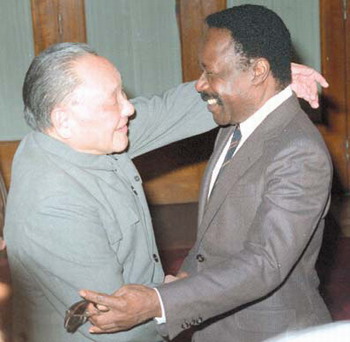Foreign and Military Affairs
China committed to spirit of giving
By Yang Cheng (China Daily)
Updated: 2010-08-13 08:36
 |
Large Medium Small |
|
|
In 1995 China began to provide medium and long-term low-interest loans in addition to free assistance it already provided to needy nations.

As aid diversified, foreign projects spurred various forms of trade cooperation, creating a better external environment for China's reform and opening-up.
At the turn of the 21st century, China continued to steadily enhance its aid efforts, with more attention focused on poverty relief and improved living conditions through capacity building in recipient countries.
The Chinese government has announced a series of measures at a range of international conferences including the UN high-level meeting on financing for development in 2005, the Beijing Summit of the Forum on China-Africa Cooperation (FOCAC) in 2006, the UN conference on Millennium Development Goals (MDG) in 2008 and the Ministerial Meeting of the FOCAC in 2009.
The measures cover cooperation in agriculture, basic infrastructure, medical services, capacity building, clean energy development and debt reduction and exemption.
China has overcome many negative impacts of the financial crisis and honored its commitments. The efforts have advanced the UN's MDG goals and enhanced its image as a responsible country.
By the end of 2009, China had provided economic and technological assistance to more than 120 developing countries and offered donations to 30 international and regional organizations.
The efforts came even as China itself remains a developing country with more than 40 million people living in poverty and 270 million classified as low income.
Its per capita GDP will remain relatively low over the long term, but China continues to fulfill its commitments.








